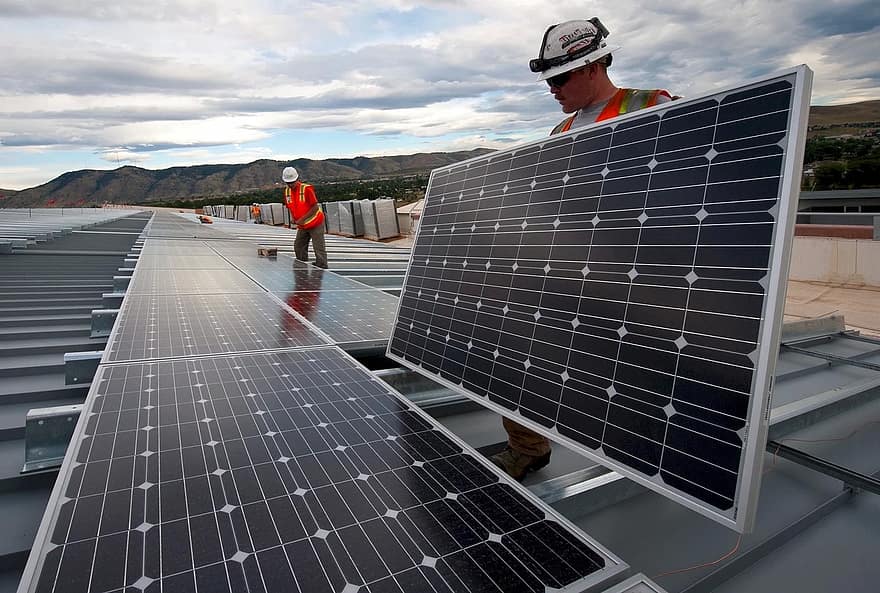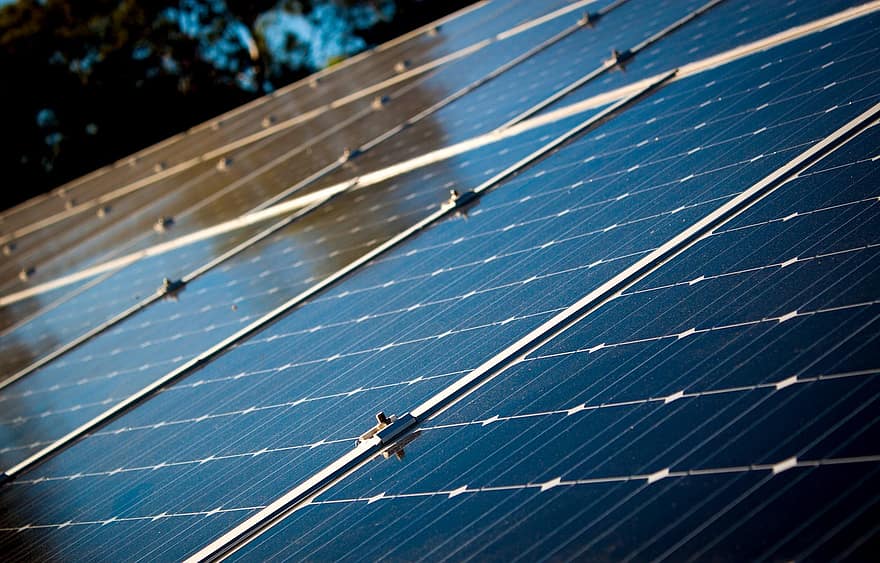Summary
– Photovoltaic panel dimensions: calculate your needs
– Panel size: depending on the sunlight
– Photovoltaic solar panel efficiency: variable according to type
Photovoltaic solar panels are the most common and cost-effective device for producing individual energy for home use.
You should choose the panel’s size according to your electricity needs and the amount of sunshine in the area. Also, the efficiency of the solar photovoltaic system will depend on the type of photovoltaic modules chosen.
Photovoltaic panel dimensions: calculate your needs
To know what size to plan for your photovoltaic solar panel, you must first determine your energy needs. Calculate your average electricity consumption over a year, consulting your previous bills if you have any.
If you are installing these photovoltaic panels on a new building, you must estimate your future consumption. To do so:
-
- List the different electrical appliances in your home, specifying their power in watts per hour.
-
- Multiply the power by the number of hours of use per day to obtain the daily energy consumption. The sum of the daily consumption in Wh/day gives you an idea of the electricity needed each day.
Note: on average, an Australian household consumes 3,500 kWh per year, excluding electric heating.
Panel size: depending on the amount of sunshine

The amount of energy that your photovoltaic solar panels will be able to produce depends directly on their size. On average, an area of 25 m² of modules produces about 3,000 kWh per year.
The production of electricity also depends on the amount of sunshine, which varies from region to region.
Suppose the installation is intended to operate all year round (in the primary residence, for example). In that case, winter sunshine figures are used as a basis for correctly estimating the ideal size of the photovoltaic panels.
Depending on the latitudes, you will also need to adapt your photovoltaic solar panels’ orientation and inclination to optimize your yield.
Photovoltaic solar panel yield: variable according to type
A photovoltaic module is defined by a peak power, expressed in watt-peak (Wp) which is the maximum power that a cell can produce under standard temperature, pressure and sunlight. For example, a 10 m² panel has a peak power of about 1 kWp.
However, note that the peak power is a theoretical value, and in practice, this power is rarely reached. This value is mainly used to compare different types of modules.
The different types of photovoltaic cells consist of:
Crystalline flat cells: These are small modules with a thickness of approx. 0.2 mm. Each one produces a small amount of electricity, so they are connected to obtain the desired power. These cells can be made of different materials:
-
- Monocrystalline silicon: more expensive but its efficiency (18%) is better.
-
- Multi-crystalline silicon: less expensive with lower efficiency (12 to 15%). It represents 45% of the market;
-
- Ribbon silicon: less profitable but more recent, it has a yield equivalent to multi-crystalline.
-
- Thin films: the technique consists of depositing a thin uniform layer of semiconductor material powder on the glass (5% of the market). The modules are then much more extensive and better capture diffuse radiation. They are often amorphous silicon, which is much cheaper but less profitable (6%).
Note: In terms of peak power, the different installations have more or less the same price. However, to obtain the same electricity production, the lower the yield, the larger the photovoltaic panel’s surface area will have to be.
If you wish, you can get in touch with ALLSTATE SOLAR ENERGY in Dandenong South. They are solar panel specialists who can offer you a free quote, and helpful advise.
You can read more here:

